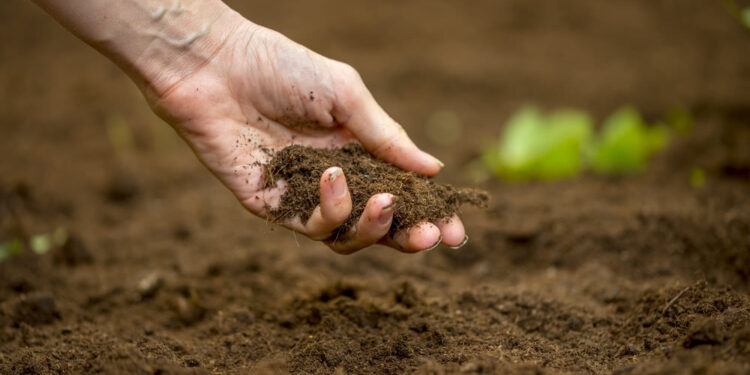Growing a garden full of beautiful flowers, shrubs, fruits, vegetables, or herbs is one of the most satisfying experiences. Not only does a thriving garden add joy to your life, but it also adds beauty to your home. Homes with well-manicured gardens and landscaping are known to sell faster and attract more buyers. However, keeping plants growing and thriving can be difficult. Developing and maintaining a garden starts with nutrient-dense soil that can feed plants for the entire growing season. Here are a few easy tips to enhance your garden soil and keep your plants thriving.
Test
Before adding to your soil, you need to know what to add. Dirt can range from highly acidic to highly alkaline and anywhere in between. Most plants prefer the degree of acidity or alkalinity in the soil, which means amending your soil to the correct pH will assist in proper plant growth. Luckily, easy-to-use soil pH test strips are available to purchase online or in stores. You can also follow a DIY soil testing process with baking soda and vinegar. Your soil test will also tell you about the fertility of your soil and the amount of nitrogen, phosphorus, and potassium in the ground. It would help to consider what soil type you have: clay, sandy, or loamy.
- Clay soil easily holds its shape when rolled into a ball. Clay needs better drainage and aeration. You can quickly tell clay soil by its cracks on hot summer days and its extreme puddling in the winter.
- Sandy soil has large particles and feels gritty. Crumbly soil won’t form or stay in a ball when picked up. Sandy soil drains quickly, which means it loses quite a bit of nutrient quickly.
- Loamy soil is the ultimate soil. This is the soil you are trying to obtain. Loamy soil is damp but not sticky. It crumbles easily and does not form into a hard ball or crack when dry.
Prepare the soil
Now that you know your soil needs, you can prepare it for the growing season.
Add nutrients
Wide varieties of fertilizer can be found in your local hardware store. Each type of fertilizer has a specific combination of nitrogen, phosphorus, and potassium. Depending upon what your soil test specified, you can choose a brand and type of fertilizer to complement your soil. If you prefer organic matter, consider one or a combination of these options.
- Lime: Raises the pH of acidic soil.
- Sulfur: Lowers the pH of alkaline soil.
- Wood ash: Raises the pH of acidic soil.
Fix different types of soil.
The correct soil texture is essential for root development and for roots to take up moisture and air. If your soil is dense and clay-like, the ground will remain too moist, which means roots will drown and even develop root rot. Sandy soils will drain too quickly, and your seeds won’t absorb enough moisture. For the best growing environment, you want a ground that will drink water but allow enough air to circulate. You can improve soil texture by adding organic material. Compost and peat moss are the most notable organic materials, but you can also add manure, grass clippings, and cover crops to adjust your soil’s texture.
- Clay soil: The best way to enhance clay soil is to add 3 to 4 inches of compost. This will make the soil more workable. Add straw or fine bark mulch to the ground for added structure.
- Sandy soil: Work in the compost of well-rotted manure to the ground. Usually, about three to four inches will do. You can also work in cover crops to provide additional structure.
- Loam: With the perfect blend of soil types, you most likely won’t need to add much before planting unless the soil test shows a lack of nutrients.
The easiest way to enhance your garden soil is by adding compost or other organic material once or twice a year. Retest your soil every year, preferably in the fall, so you can add amendments and allow them to decompose over the winter. A well-fed garden will add beauty to your home, enhancing your curb appeal. Homes with top-notch curb appeal are more attractive to buyers and can help you sell your St. Petersburg home quickly and for a great price.







